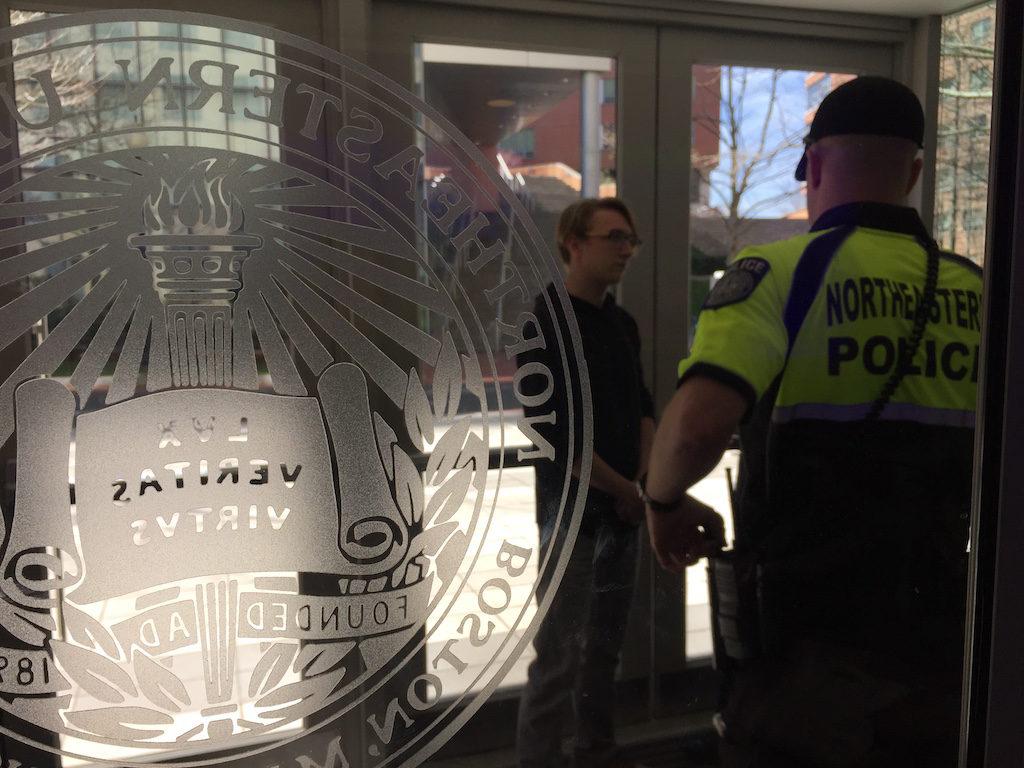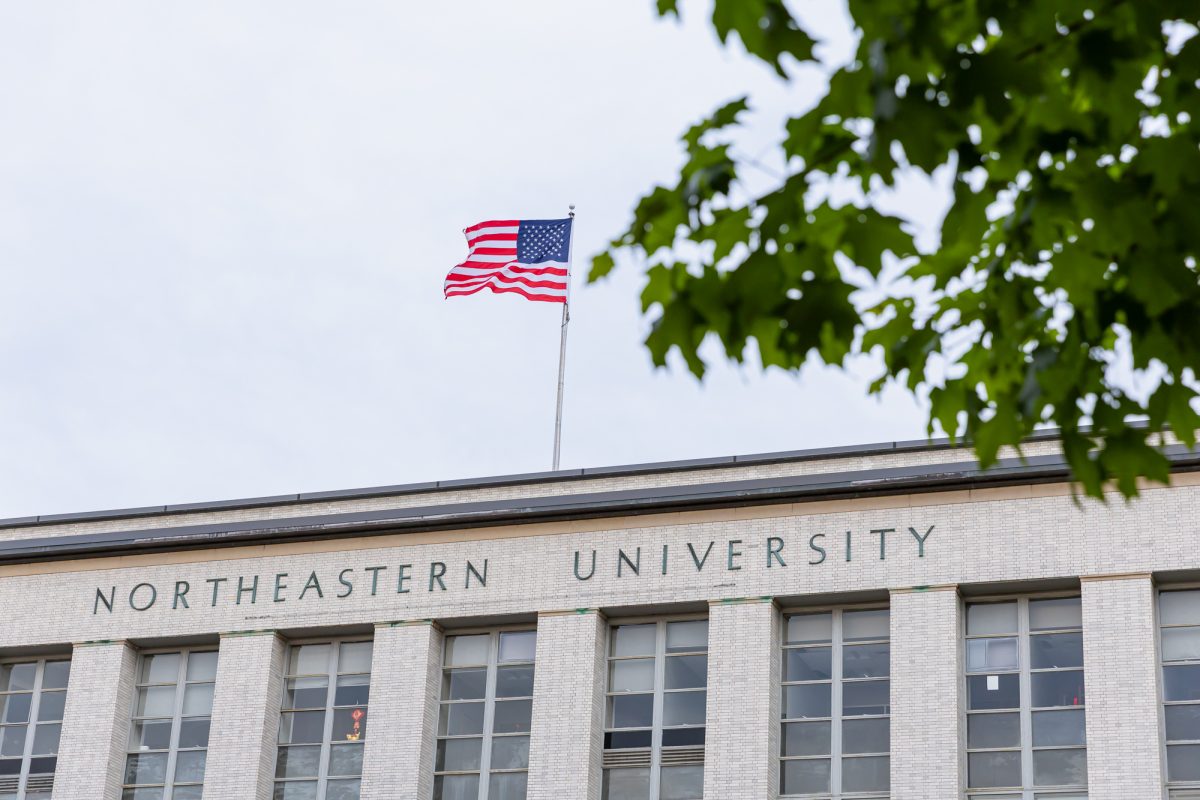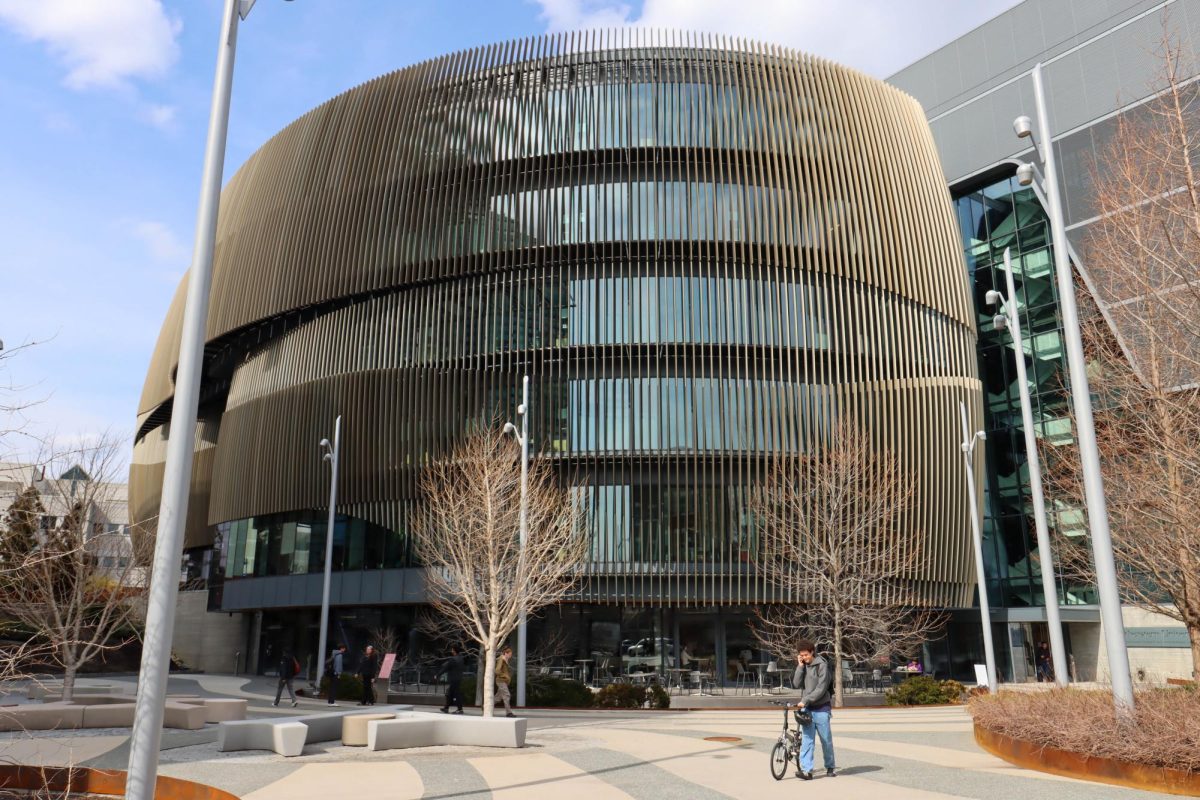By Cassidy DeStefano, news editor
Dozens of student activists staged a six-hour sit-in at the Northeastern University (NU) Visitor Center this afternoon, drawing the attention of campus police and top-tier administrators.
According to an April 21 press release, the group, acting under the umbrella campaign DivestNU, sought a formal timeline from President Joseph E. Aoun’s Senior Leadership Team (SLT) to pull university funding from corporations that use fossil fuels within the next five years.
“We don’t know what the process is because there’s no transparency around it,” said sophomore environmental studies and economics combined major and campaign member Sophia Showalter. “We’re just told to trust the administration, that they will push the issue forward.”
She said that on the morning of the protest, students filed into the Visitor Center on Leon Street and were immediately confronted by the Northeastern University Police Department (NUPD), whose officers requested identification from participants as proof that they attended the university. As the day progressed, police requests became more frequent, and by closing time, protestors were prohibited from leaving their belongings unattended in the Visitor Center or re-entering the building. Demonstrators departed the building promptly at 5 p.m. and paraded through Centennial Common and the Krentzman Quadrangle with banners carrying slogans including “time to vote” and “injustice is not an investment.”
“Talking about divestment and the university, to me, reflects the institution that I choose to be a part of,” said freshman policy, philosophy and economics major and DivestNU Police Liaison James DeCunzo. “And an institution that invests in fossil fuels is an institution that hopes that fossil fuel companies continue to be profitable.”
At approximately 11:45 a.m., Vice President for Student Affairs Madeleine Estabrook arrived to negotiate with Showalter. DeCunzo said that Estabrook has promised for the last two summers to lay the groundwork for a climate action plan, but less activist momentum during the summer term has left the work unfinished.
“She said that this sit-in reflects poorly on us since we just went through the avenue of the SIC, and now we’re going outside the proper forums,” DeCunzo said. “But we have tried to go through the proper forums for two years now, and it’s like they’re making it up as we go along.”
Estabrook declined to comment.
According to third-year environmental studies and economics combined major Charlie Cavallaro, the sit-in demonstration followed an April 7 submission by NU’s Social Impact Council (SIC), a student-faculty coalition that launched the Violence Support, Intervention and Outreach Network, the university’s sexual assault prevention organization.
“On that day, the SIC released its official recommendation that the university divest from fossil fuels as part of a wide-reaching climate action plan,” Cavallaro said.
That afternoon, DivestNU released a statement to the SLT requesting that the administration provide an indispensable timeline for divestment action by April 18. Cavallaro said that the deadline came and went, leading the SIC to pitch its ideas to the SLT on the morning of the sit-in. Members of the movement asked that the board discuss divestment at its September 2016 meeting and put the issue to a vote in March 2017, but the timeline was not approved.
“One of the ways that the administration has dragged its heels is through deferment,” Cavallaro said. “We’re here to press and push for a solid commitment that if they then break in the future, we can hold them accountable.”
Sophomore international business major Andrew Proctor said that he walked by the DivestNU group at around 3 p.m. and was immediately alarmed.
“I passed the Visitor Center and noticed all the staff was outside, which was odd to me,” he said. “Then, I saw a sign that said ‘Exxon knew about climate change,’ so I turned around and asked the tour guide to take it down.”
When the tour guide declined, Proctor began to remove the signs himself, noting that the demonstration may have given a poor image to prospective high school seniors trying to choose a college.
“It hurts our reputation as a university,” he said. “The seniors are already tasked with a tough decision and to bring such a trivial non-issue into play, to shut down the admission center and to give the staff such a hard time really upset me.”
Still, junior environmental studies and political science combined major Austin Williams said that the protest was conducted correctly and long overdue.
“We believe that the process has been unnecessarily slow,” he said. “It’s dragged along, and we’ve often found that the only times that it picked backed up was when the campaign directly applied pressure.”
Williams said that the campaign gained traction last spring when it staged a sit-in at President Aoun’s office building. The movement resulted in Estabrook dispatching a university-wide email detailing the results of an undergraduate referendum, which showed over 75 percent of respondents in favor of divestment activities.
“As students, we want to guarantee that the direction for our institution incorporates the viewpoints of all stakeholders,” Williams said.
He added that the DivestNU campaign would be willing to work with the administration if it were granted a specific liaison to collaborate with, a clarification as to what the SLT’s deliberations will look like and an idea of the extent that it will or will not engage with the Board of Trustees. He said that these accommodations must be made in the short term.
“What motivates us to act today is a recognition of the immediacy and the scale of the climate crisis. This is really people versus physics,” Williams said. “And unfortunately, the world just keeps getting warmer.”
Photo by Cassidy DeStefano















